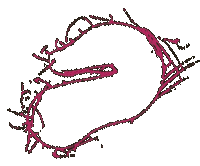November 17, 2004
some thoughts from seven miles
:. How the participant experience functions is important. The end experience is derived from the function of this piece. There is a difference between the function and the movement that inspired it. The movement that inspired it is a singular event. While having to be experienced in the context of its surroundings, it remains disconnected from its environment. The function of the piece is more than, but still includes, the original movement or a close facsimile. The function exists in a designed environment with a combination of interactive cues followed by an interaction. These cues can be visual, form, and materials, all playing off of instinctual and cultural standards of how to interact with things. Environmental cues can also be used specifically, to prime the awareness of the participant.
:. I evaluate my pieces like experiments. The experiment is a secondary thought in the making of the piece. I do not expect this to be a major feature of the participants' experience. Pieces are the beneficiary of experiments but not a product of them. They don't function as research paper would. They work more like a magazine article as an adapted, easier to read version of a longer set of results.
:. I need to be around science. I need to go to lectures and listen to discussions. I need to soak it in. I need to learn their methodology. I need to understand how scientists come about their ideas. What happens before an experiment is developed? What inspires their hypotheses? What standards to they use in creating tests? I want to learn how they do research. I want to know where prior knowledge is. I want to know their vernacular. I want to know what makes them develop new vernacular. What level of scientist interpretation exists? What level is generally accepted? I want to talk with them about their work. I want to talk with them about my work. I want to know why they do science.


